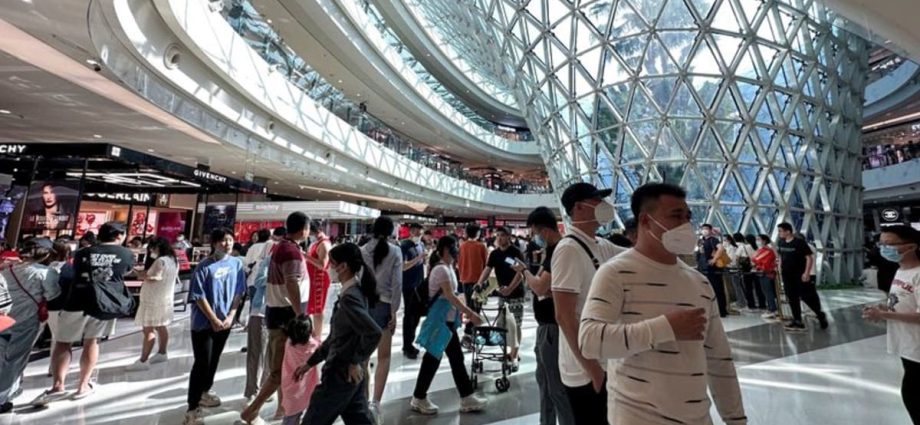
SHANGHAI: Shoppers visiting China’s island province of Hainan spent a record 2.49 billion yuan (US$346.2 million) on duty-free goods over the eight-day Lunar New Year holiday, data from Haikou Customs showed.
That represents a year-on-year rise of 60 per cent, with the number of shoppers from Feb 10 to Feb 17 reaching more than 297,000, each spending an average of 8,358 yuan on duty-free goods.
Since 2020, when China tripled duty-free purchase limits in the 12 duty-free malls in Hainan to 100,000 yuan, overall duty-free spending has also tripled from about US$2 billion in 2019 to more than US$6.1 billion in 2023. That growth is expected to continue as the entire island is set to become duty-free in 2025.
Even a year after Chinese borders re-opened, the lure of duty-free shopping in Hainan, an island about the size of Belgium, remains strong as flight restrictions, visa delays and the high cost of travel to far-flung international destinations have kept many Chinese travellers.
Spending in Hainan was a notable bright spot for tourism spending over China’s Lunar New Year holiday, with domestic Chinese tourists overall still spending less per trip than they did in 2019, despite a boom in trips this year after an enormous wave of COVID-19 infections impeded last year’s holiday period.
Overall domestic tourism spending jumped by 47.3 per cent to 632.7 billion yuan (US$87.96 billion) from the same holiday period in 2023, according to data from the Ministry of Culture and Tourism released Sunday.
The number of domestic trips made during this year’s holiday grew by 34.3 per cent from a year ago, totalling 474 million. Almost 100 million passengers made trips using China’s railways over the holiday, and 18 million passengers flew during the period, according to official data.
Though the ministry did not break down tourism spending per trip, according to Reuters calculations based on ministry data, average spending during the holiday this year was 1,335 yuan per trip, which remains 9.5 per cent lower than 1,475 yuan per trip in 2019.
Chinese shoppers have increasingly turned to Hainan in recent years as three years of pandemic-related border closings cut off the option of purchasing beauty brands such as L’Oreal-owned Lancome and Estee Lauder’s La Mer at duty-free counters in Korea or Hong Kong.
Global luxury players, including brands from leading conglomerates LVMH and Kering, also piled into Hainan to reach consumers domestically.
The expansion of Hainan’s duty-free shopping in 2025 also means luxury brands can operate their own duty-free stores, rather than rely on partnerships with local players such as China Duty Free Group.

